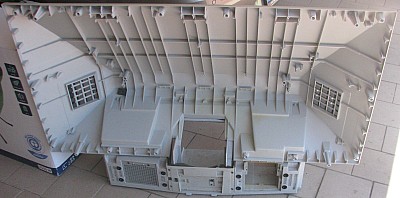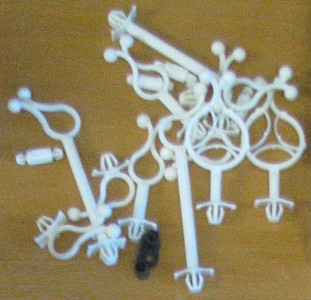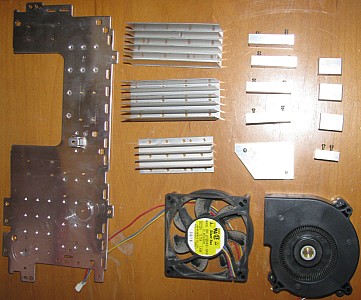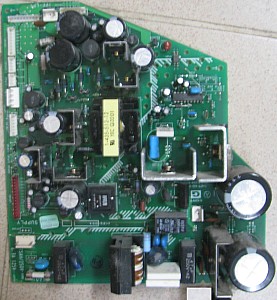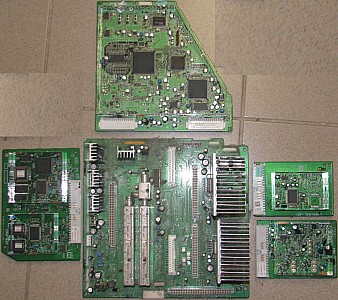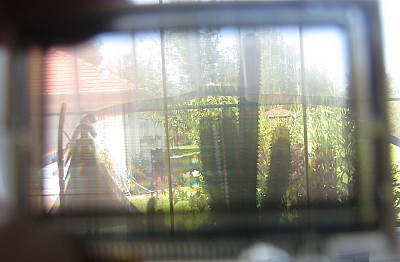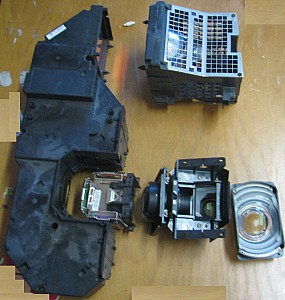Inside of a projection LCD television
- Details
- Published on 2012. szeptember 09. vasárnap, 21:24
I have disassembled our old projection TV and a miracle was revealed to me.
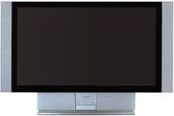
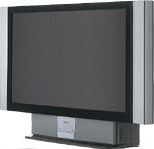 It broke down, and it would have been very expensive to repair. No one wanted it for components too. Therefore I disassembled it to the last screw and really enjoyed what I have found.
It broke down, and it would have been very expensive to repair. No one wanted it for components too. Therefore I disassembled it to the last screw and really enjoyed what I have found.
I began to seriously deal with electronics at the age of fourteen, it even motivated me to explore the complex numbers later. At that time, I disassembled a lot of old vacuum tube and transistor radio, and television with picture tube to get parts like resistors, transistors, capacitors etc. (this could not be done with today's devices). I learned a lot from this course as well. Then in the nineties I also dealt with assembling computers, but it is rather like Lego than assembling electronics ...
Since then, I follow the development of the electronics only from the outside - I love electronic gadgets. I pay attention to and I know the results of technology development and applications.
Disassembling the broken Sony KF42SX200 took one day, but it was great not only because I have not been in an electronic device for a long period, but also for seeing the theoretically known, impressive technology in practice. Here are a few words and many pictures I serve on the results of disassembly.
The bezel is almost entirely plastic. Unfortunately, not recyclable ...
The wiring is almost like in the cars.
The components of the cooling system. Interestingly, for cooling the optics an air pump was used.
The circuitries of the system's power supply. Interestingly, the power for the light bulb is provided by a separate power supply, which is shown in the last two pictures.
The electronic and connector panels that operate the television.
Before presenting the optical subsystem that carries out the essence of the imaging, a few words of operations are necessary for the pictures to tell the rest. The system works so that the light of a strong light source (lamp) is led into a light tunnel, which splits the light with semi-transparent and total mirrors and with color filters (red, green, blue) into threee colors. In the way of these rays of colors are placed three LCD panels regulated separately by the electronics so that the future pixels of the image have the desired color. The three rays of images then are led onto three neighbouring sides of a cube composed from four prizms so that these sides have pairwise only one common edge. The rays merge in the cube and the combined ray leaves on that side of the cube that is parallel to middle one of the sides where the color rays enter. The projection system consists of a lens, a mirror and a canvas that are positioned so that every time the ray changes direction it makes an affine transformation of the image. The exact timing is therefore is the real reason behind that the image displayed undistorted on the screen.
Meeting of the electronics with optics.
The optical system without the mirrors and canvas.
I think numerous high school physics labs would be happy to have this kind of optical test equipment the light tunnel and the cube prism constitute. For example, this system can be adapted with a little addition to perform the famous Michelson-Morley experiment.
Let us notice here that I sorted the parts to plastics, metals and electronic boards and took them to the waste processor of the city, but the plastic bezel was treated as junk (it is said that they are not prepared to treat such plastics), the panels was included as a hazardous waste (so no recycling). They could only recycle the few metal parts...

